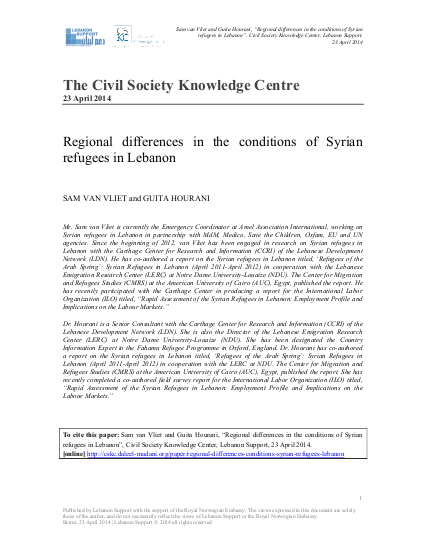
Lebanon has entered its third year as a country hosting the highest number of Syrian refugees in the region. All geographical areas with a high concentration of Syrian refugees in Lebanon share a similar protracted marginality, underdevelopment, and weak infrastructure. Syrian refugees experience different levels of legal and political conditions, security and protection, freedom of mobility, access to aid and relief services, access to labor, socio-economic conditions, and prices of goods and rent, all depending on their geographical settlements. These geographical differences are of eminent relevance that affects not only the Syrian refugees and their hosting communities, but also refugee policies and aid programmes. This paper explores these variations by analysing, first, differences among host communities and, second, by examining the dissimilarities among geographic settlements. The paper reveals that the conditions of Syrian refugees depend on the geographical areas of their settlement within Lebanon. Host-refugee relations also show a direct relationship to the variant geographical areas and their socio-demographic compositions. This paper concludes that geographical differences are of vital importance to be considered when studying the living conditions of refugees, developing policies, or designing aid programmes.